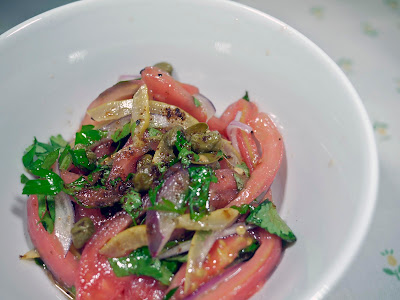From Vegetarian Bible,
Margaret Barca, Penguin Books, 2008.
Rice is a perfect accompaniment for many dishes but
sometimes it is good to vary the accompaniment from that of plain boiled rice
to one with a touch of spice. This boiled rice variation comes from a favourite
little vegetarian cookery book.
Cloves, cardamom pods, peppercorns and a cinnamon stick are
cooked for a few minutes in hot oil in a saucepan. When the spices start to
smell strongly some chopped garlic is added and cooked just a little longer.
The rice—basmati in this case—is added to the pan with
water. Once it is boiling the lid is placed on and it is left to cook for about
10 minutes. A cup of frozen peas is then added and stirred in. The lid is
placed on again and the rice cooked for a further 5 minutes. By now the rice
should be cooked and the water absorbed. The rice is taken off the heat and
left with the lid on for a further few minutes.
When ready, taste it for seasoning and fluff it up with a
fork.
The rice has a subtle flavour of Indian spices and the peas
add colour and sweetness to the dish. I had it with Spicy Quick-Fried Beans.
Taste: ✔✔✔
Ease of
cooking: ✔✔✔















